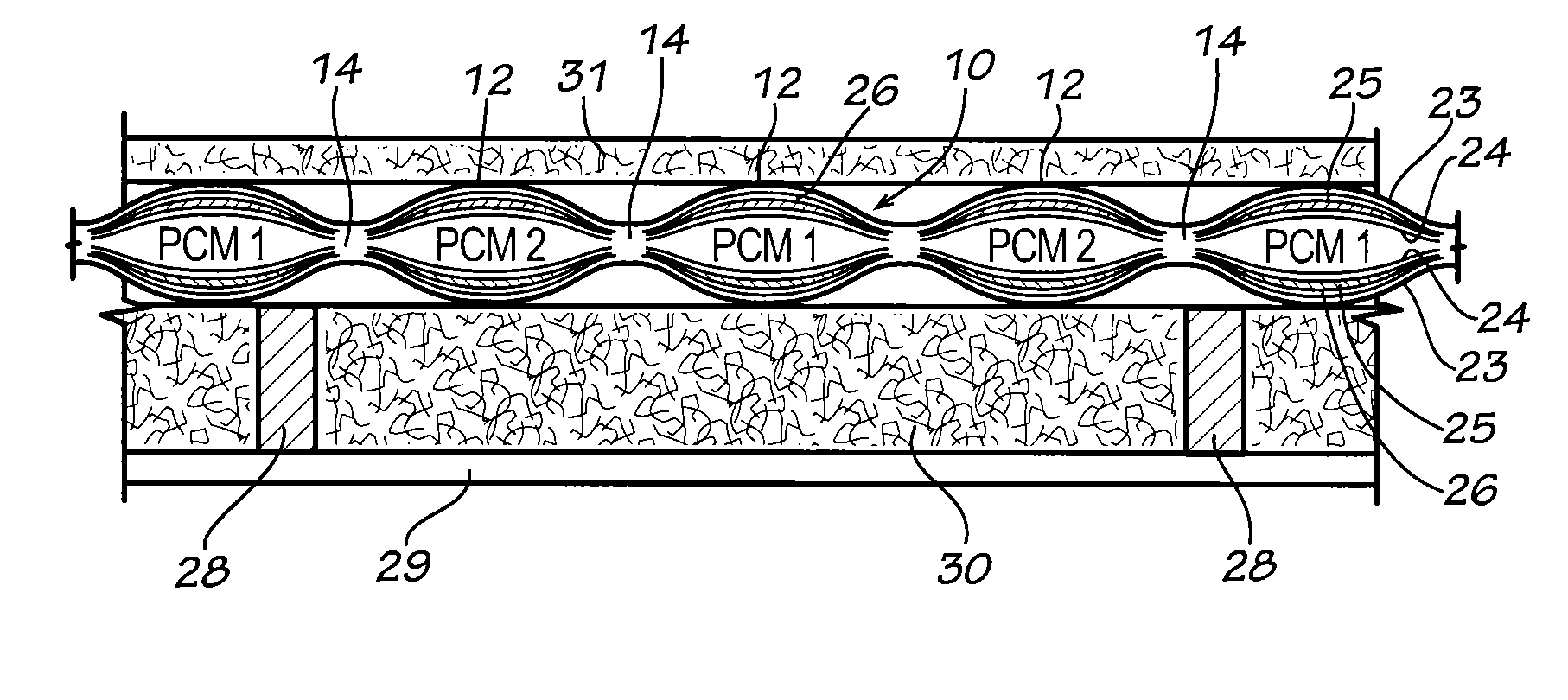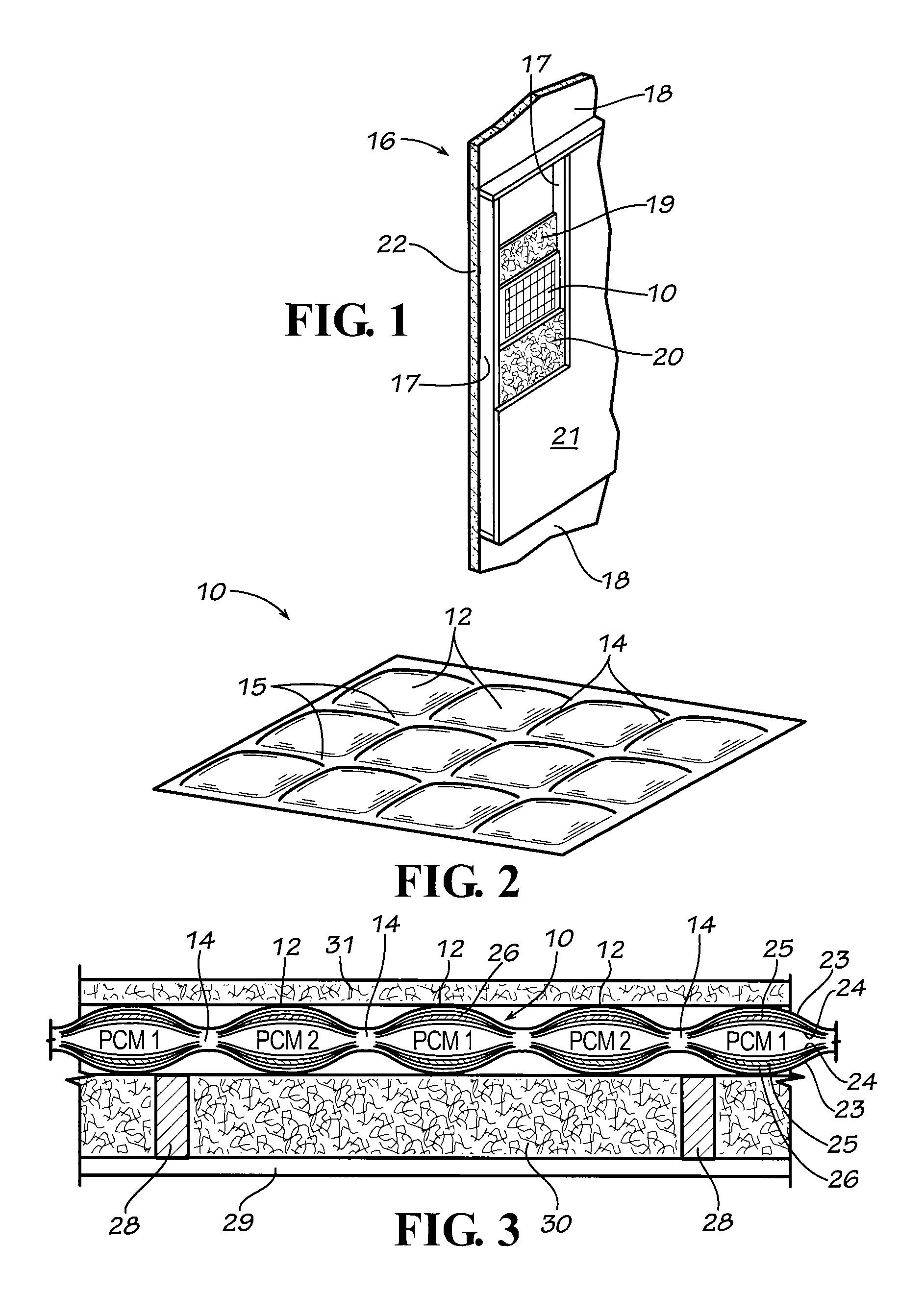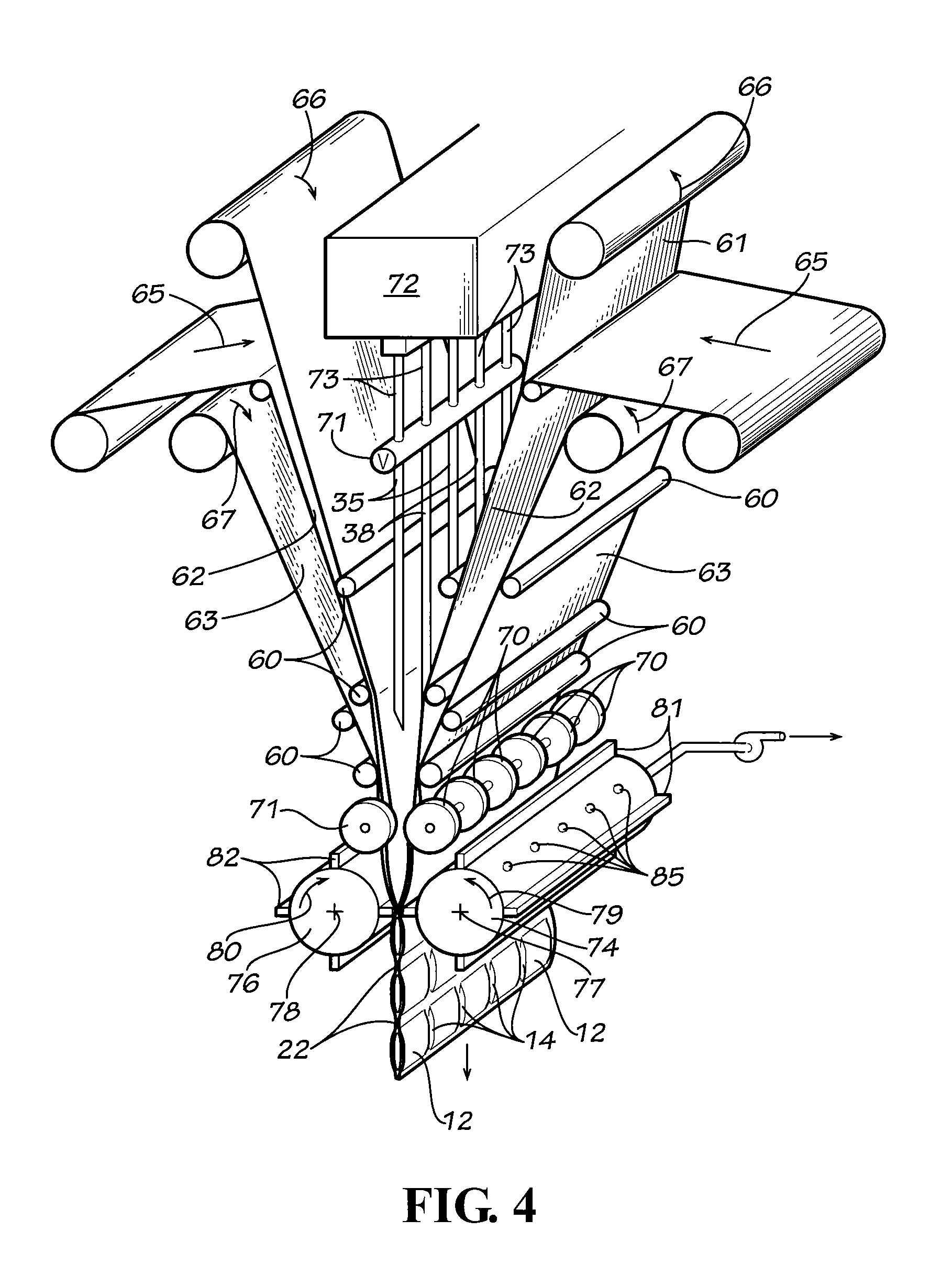Multiple phase PCM heat insulation blanket
a pcm and blanket technology, applied in the field of multi-phase pcm heat insulation blankets, can solve the problems of reducing the insulation effect of pcm, so as to achieve the effect of a greater insulation benefit for the building structur
- Summary
- Abstract
- Description
- Claims
- Application Information
AI Technical Summary
Benefits of technology
Problems solved by technology
Method used
Image
Examples
Embodiment Construction
[0035]Referring now in more detail to the drawings, in which like numerals indicate like parts throughout the several views, FIG. 2 illustrates a composite heat insulation blanket or blanket 10 that contains two PCMs that are employed for reducing heat transfer between adjacent spaces about a building structure. The PCM heat insulation blanket 10 includes a series of pods or cells 12 that are formed by heat sealing or bonding layers of thermoplastic material together, with the fused seams 14 intersected by lateral heat fused seams 15.
[0036]As shown in FIG. 1, the PCM heat insulation blanket 10 may be inserted in an external wall structure 16 of a building. Typically, a building will include vertically oriented studs 17 that are spaced apart sixteen inches on center. An exterior board 18 closes the space on the outside between the studs 17. Blanket insulation, such as fiberglass blanket 19, may be installed between the studs next to the exterior board 18, the PCM heat insulation blan...
PUM
| Property | Measurement | Unit |
|---|---|---|
| atmospheric temperature | aaaaa | aaaaa |
| temperature | aaaaa | aaaaa |
| temperature | aaaaa | aaaaa |
Abstract
Description
Claims
Application Information
 Login to View More
Login to View More - R&D
- Intellectual Property
- Life Sciences
- Materials
- Tech Scout
- Unparalleled Data Quality
- Higher Quality Content
- 60% Fewer Hallucinations
Browse by: Latest US Patents, China's latest patents, Technical Efficacy Thesaurus, Application Domain, Technology Topic, Popular Technical Reports.
© 2025 PatSnap. All rights reserved.Legal|Privacy policy|Modern Slavery Act Transparency Statement|Sitemap|About US| Contact US: help@patsnap.com



